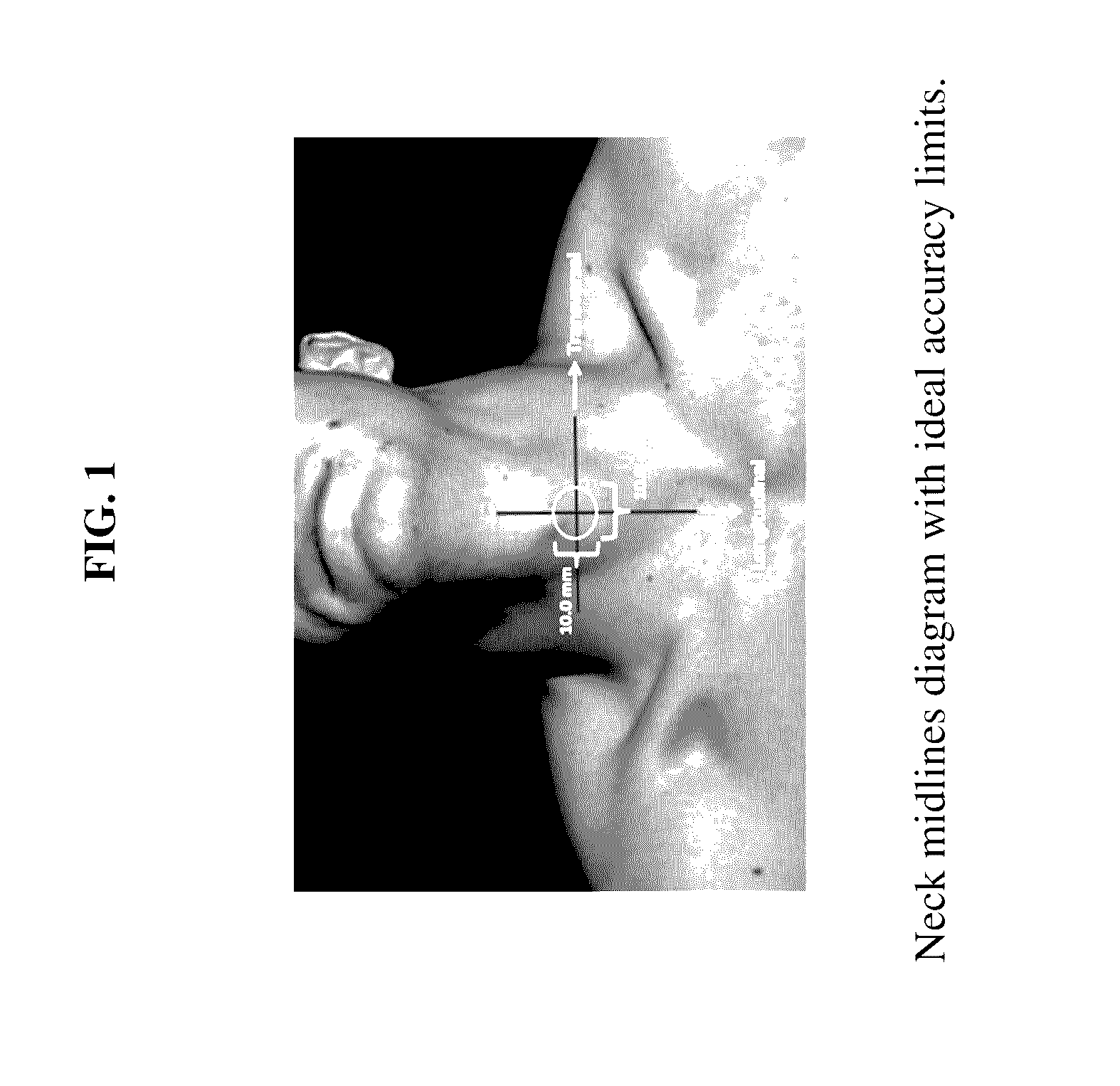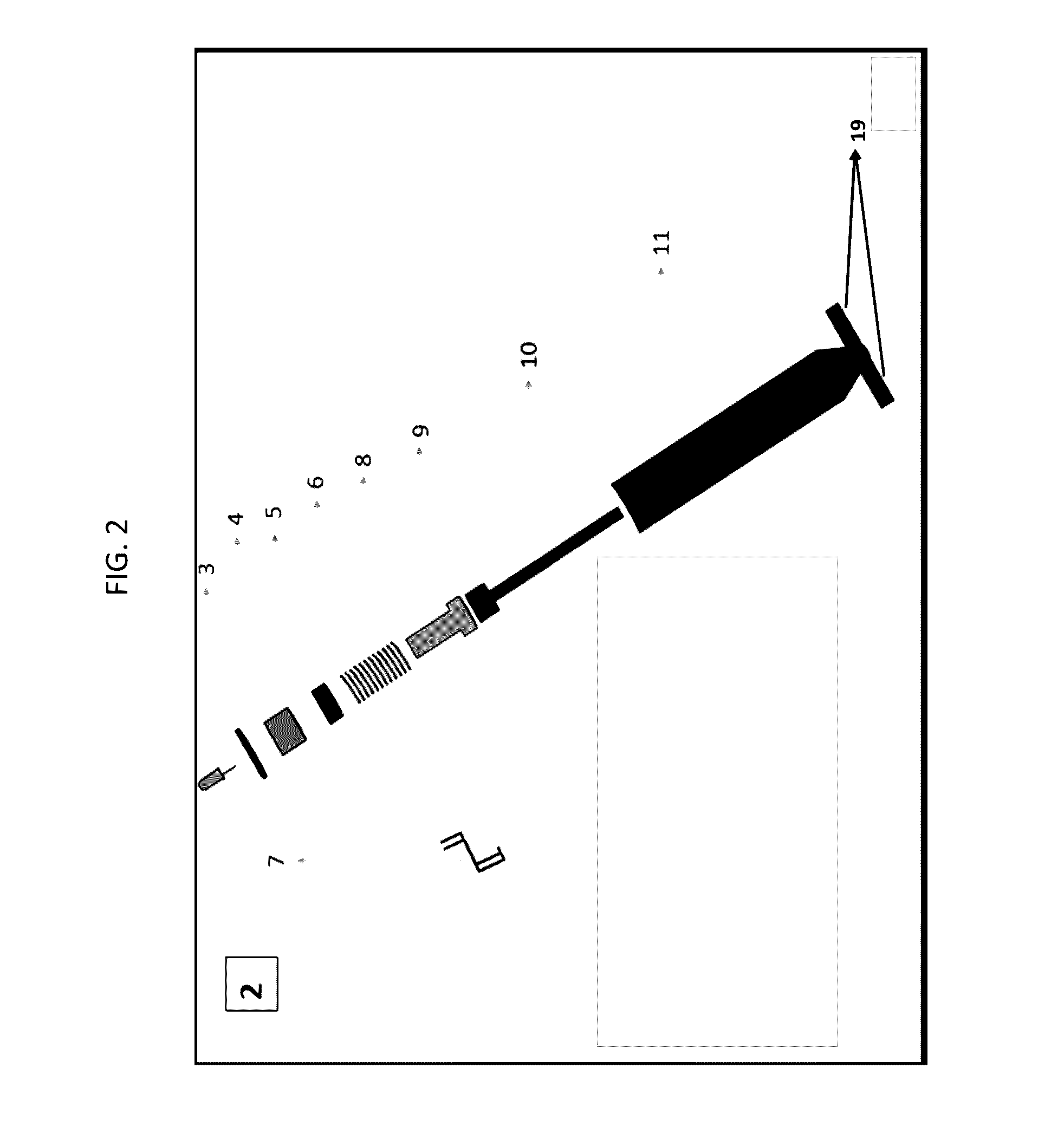Device for the Mechanical Detection of Underlying Tissues
- Summary
- Abstract
- Description
- Claims
- Application Information
AI Technical Summary
Benefits of technology
Problems solved by technology
Method used
Image
Examples
example 1
[0090]This example describes one embodiment of the invention. The device has a cylindrical design that will make it easy to use for the operator. The device has two plastic cylindrical elements (container and probe), one piezoelectric sensor, a spring and a LED light connected at the end. The combined electrical / mechanical approach involves the location of the cricothyroid membrane, which is located between the cricoid and the thyroid cartilages both having the same mechanical properties. It is based on a negative system. Since the cartilage's mechanical properties are known, the device is calibrated to detect the cartilage and membrane to cartilage transitions instead of detecting the membrane itself. One of the cylinders (probe) is inside the other cylinder and is hanging from a spring. This arrangement reduces the human variable when applying force. In addition, once the spring is compressed, the second cylinder presses onto the piezoelectric force transducer and transforms the m...
example 2
[0128]This example describes another embodiment of the invention.
[0129]This embodiment functions by the differential pressure principle. The device contains a scalpel, balloon, spring, and a pressure gage. This mechanical approach detects the Cricothyroid Membrane since it is located between two cartilages (Cricoid and Thyroid) with different mechanical properties than the membrane. This design contains a separate base to decrease the amount of human error while applying pressure with the hand. This device consists of a differential pressure gage that can detect difference from 0-0.25 W.C (inches of water). (See FIGS. 5-7).
[0130]As shown in FIG. 5, Panel A, when force is applied to probe (10) it pushes on spring pin (9) that compresses spring (8) and then an end of spring pin (9) passes through balloon container wall (14) and presses on balloon sensor (13). Changes in pressure are indicated by pressure gage (12). As shown in FIG. 6, scalpel (15) can be retracted into container (11) ...
example 3
[0169]This example describes another embodiment of the invention.
[0170]Container:
[0171]A polymer cylinder that contains the rest of the elements inside. A polymer rod probe hangs from a spring at one end and the other end extrudes from an end of the container. The spring reduces external human force variations by letting the probe slide along an inner contact surface of the outer cylinder. The length of the device is 132 mm total with a diameter large enough to keep the sensor in place.
[0172]Spring:
[0173]Made up of steel, it follows the material properties established in the ASTM standards. Since the shear modulus of steel is 7.722×1010, the spring has a spring constant of k=293.06 N / m in order to balance the force exerted up by the cartilage and activation of the sensor. The spring has 12 coils, with a diameter of 0.014 m and wire thickness of 0.001 m.
[0174]Sensor:
[0175]The sensor converts the mechanical force into a signal output. The device has a piezoelectric sensor that convert...
PUM
 Login to View More
Login to View More Abstract
Description
Claims
Application Information
 Login to View More
Login to View More - R&D
- Intellectual Property
- Life Sciences
- Materials
- Tech Scout
- Unparalleled Data Quality
- Higher Quality Content
- 60% Fewer Hallucinations
Browse by: Latest US Patents, China's latest patents, Technical Efficacy Thesaurus, Application Domain, Technology Topic, Popular Technical Reports.
© 2025 PatSnap. All rights reserved.Legal|Privacy policy|Modern Slavery Act Transparency Statement|Sitemap|About US| Contact US: help@patsnap.com



